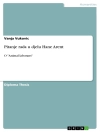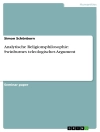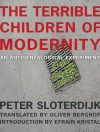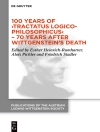This book shows, for the first time in its full spectrum, the interconnectedness and topicality of two historically and philosophically significant developments of philosophical theories of the study of mind: that of phenomenology of Edmund Husserl and phaneroscopy of Charles S. Peirce. The chapters in this book put the two thinkers in a novel discourse while engaging in mutual scholarship on the large overlaps between the historically two largely independently developed but converging ideas of mind, cognition, consciousness, being, and experience. It is the second volume in a projected series of three, the first of which is Peirce and Husserl: Mutual Insights on Logic, Mathematics, and Cognition (2019).
This book consists of three parts. Part I contains studies on the basic elements and the methodological themes of both “phenomenologies” vis-à-vis each other. Part II of the book is dedicated to metaphysical and existential themes. Finally, this book contains a hitherto unpublished selection of connected texts from Charles Peirce concerning phaneroscopy, the theory of definitions, and other related historical, philosophical, and religious themes from 1910, transcribed and introduced by one of the editors of the volume. This book is of interest to scholars in phenomenology, phaneroscopy, and the history of ideas.
สารบัญ
Introduction (Ahti-Veikko Pietarinen and Mohammad Shafiei).- Part 1: General overview and method of phaneroscopy.- Chapter 1. Suspension of judgment and transcendental research: Peirce and Husserl on philosophical knowledge (Leila Haaparanta).- Chapter 2. Putting aside one’s natural attitude—and smartphone—to see what matters more clearly (Marc Champagne).- Chapter 3. The elucidation of the phenomenology of the picture sign from its phaneroscopy, and vice versa (Göran Sonesson) (published posthumously).- Chapter 4.Peirce on the primal positive science (Gary Fuhrman).- Chapter 5. Phaneroscopy: A science of diagrams (John F. Sowa).- Part 2: Peirce, Husserl, and all the rest: Categories, metaphysics and existential questions.- Chapter 6. Phenomenological views on modes of being, modes of evolution, and the pragmatic maxim (Roberto Walton).- Chapter 7. Musement as Epoché: Peirce and Husserl on religious experience (Michael L. Raposa).- Chapter 8. Continuity and the living present: Husserl and Peirce on time consciousness (Richard Kenneth Atkins).- Chapter 9. C. S. Peirce’s generative categories (Vincent M. Colapietro).- Chapter 10. Reduction and firstness: A Peircean contribution to French phenomenology (Rocco Gangle).- Appendix: Charles S. Peirce: How to Define (R 643–R 646, 1910) (Ahti-Veikko Pietarinen).
เกี่ยวกับผู้แต่ง
Ahti-Veikko Pietarinen (Ph.D. U. Helsinki, 2002) is a professor of philosophy at Hong Kong Baptist University, Department of Religion and Philosophy. He moved to Hong Kong from Helsinki, Finland, and Tallinn, Estonia, where he was a professor of philosophy and a professor of semiotics for many years. He has held visiting professorial positions at universities in Korea and China. Pietarinen’s research interests span from history and philosophy of logic, language, and scientific methods to human, artificial, and synthetic minds.
Mohammad Shafiei obtained his Ph.D. in 2017 from the University of Paris1 with a dissertation on phenomenology and philosophy of logic. He has worked as postdoctoral researcher and lecturer at Shahid Beheshti University, Iran. His publications include Meaning and Intentionality, a Dialogical Approach, which is based on his Ph.D dissertation, and Peirce and Husserl: Mutual Insights on Logic, Mathematics and Cognition co-edited with Ahti-Veikko Pietarinen. He has also published on Kant, philosophical logic, metaphysics and monadology.












